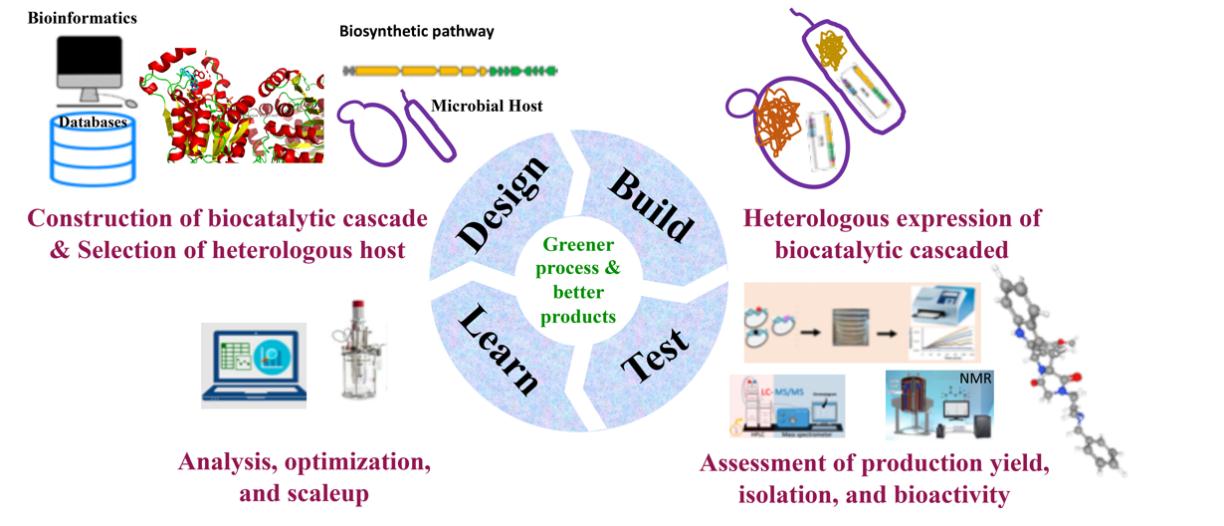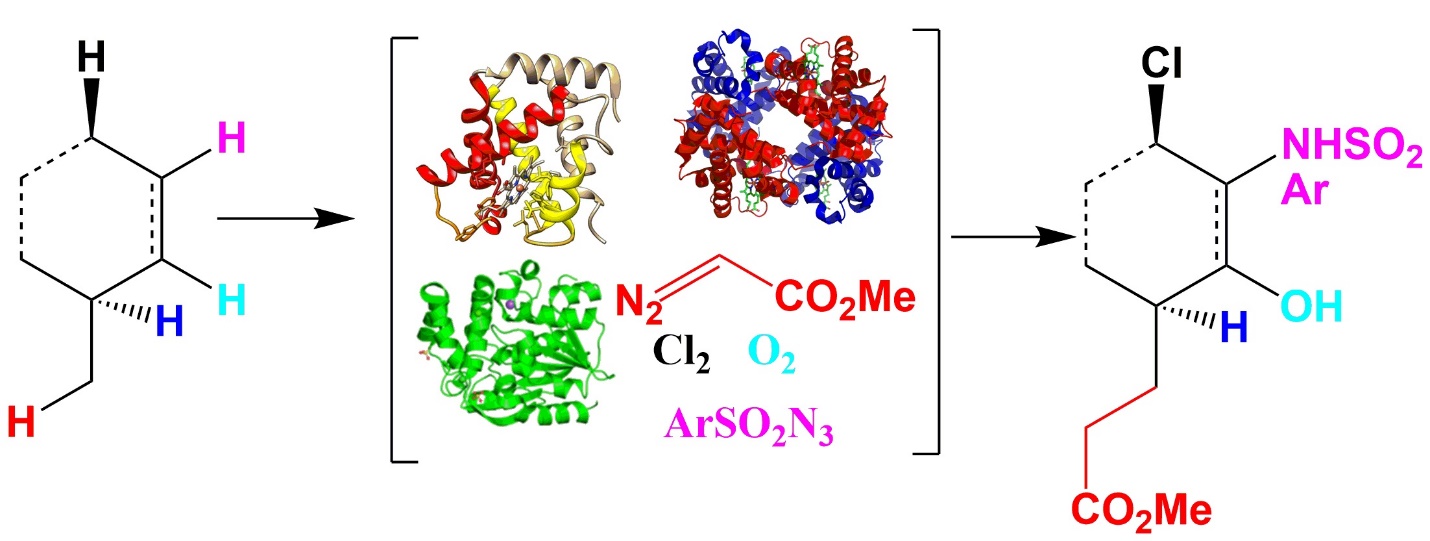Rapidly growing implementation of enzymes for the production of a diverse range of high-value chemicals is driven by an enzyme’s unique ability to operate under mild and aqueous conditions with high selectivity and specificity. Therefore, the incorporation of enzymes into existing synthetic manufacturing routes results in a significant reduction in the production cost and hazardous waste. Despite of significant advantage of the enzyme-based process, only a small portion of enzymes have been exploited in the industry due to the unavailability of enzymes that can catalyze desired chemical transformation or the instability of available enzymes in industrially harsh conditions. The emerging economy and the merit of enzyme-based process demands researchers to discover and engineer enzymes to evolve superior biocatalysts with desired reactivity, specificity, and stability required to catalyze a wide-range of chemical transformations. Advent of genetic tools and bioinformatics resources enable biological engineers to engineer enzyme and construct synthetic multi-enzyme pathways in proven heterologous production platforms for production of valuable compounds such as medicines etc.
Our research focus is to develop a biocatalytic/synthetic biology platform (Fig.1-3) by harnessing the powerful chemical reactivity and selectivity of biosynthetic enzymes and engineer their properties to evolve superior biocatalyst, as well as to develop a biocatalytic process for the production of pharmaceutical compounds, and pharmaceutical intermediates. We are trying to achieve such challenging goal by a) first developing the molecular level understanding about factors governing enzyme’s substrate scope, and activity, as well as their spatio-temporal communications with other enzymes of biosynthetic pathways under consideration, b) further exploiting the gained knowledge to develop in vitro biocatalytic and in vivo synthetic biology platform for combinatorial biosynthesis of desired compounds, and c) further assessment of their bioactivity followed by their scale-up.
 Figure 1:
Figure 1: Schematics of work flow for development of biocatalytic/synthetic biology platform for discovery and development of therapeutics.
 Figure 2:
Figure 2: The overview of enzyme discovery and engineering approach to evolving biocatalyst with novel and improved properties.
The far-reaching objectives is the biocatalytic synthesis of pharmaceuticals and pharmaceutical intermediates. Potential enzyme classes we are currently exploring for drug discovery and developments are P450 enzymes, halogenases, transaminases, transferases, cyclases etc.
 Figure 3:
Figure 3: Schematics of biocatalytic synthesis of pharmaceuticals and pharmaceutical intermediates.